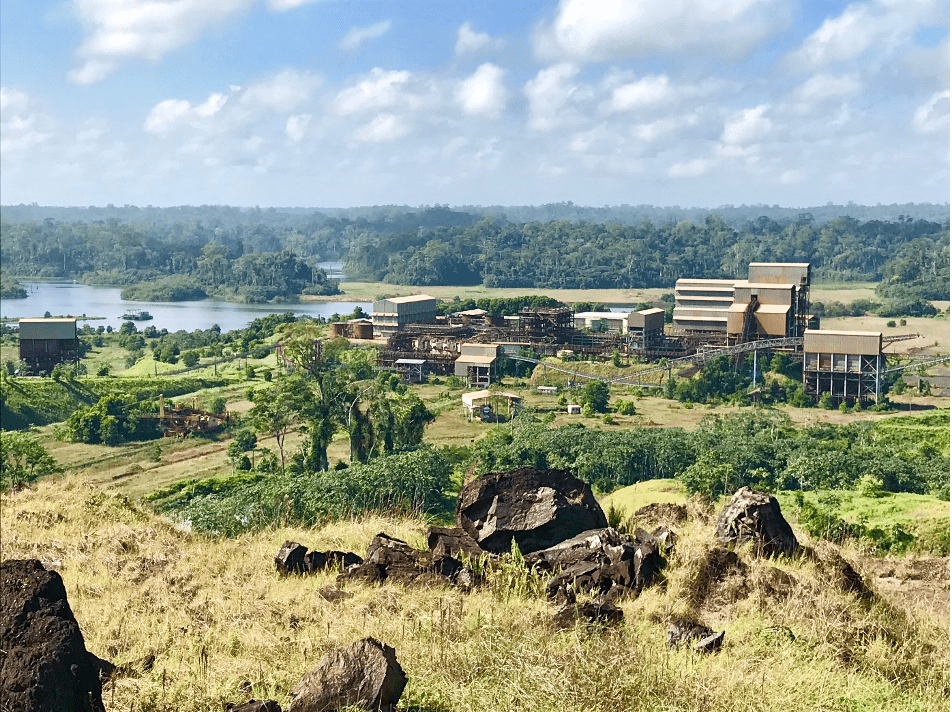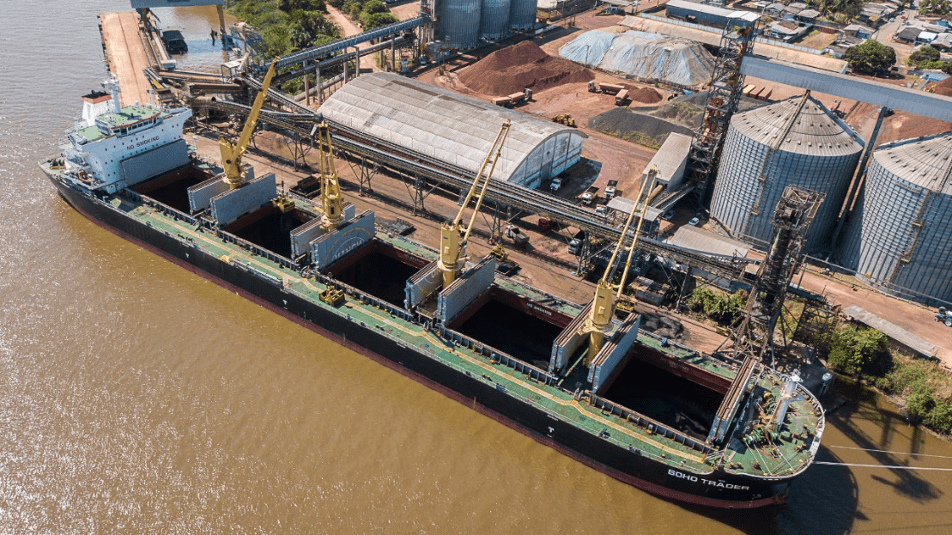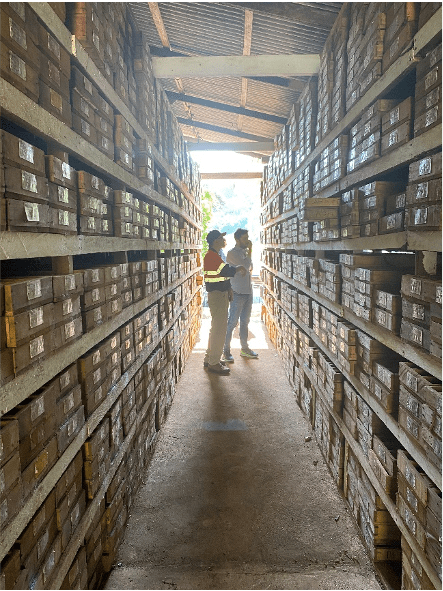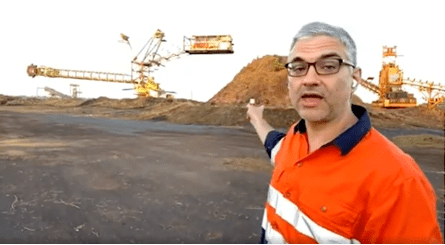By Alan Green
On December 29, Cadence Minerals (AIM: KDNC), a mining investment company listed in London, announced that it had completed all the preconditions to invest into and acquire an initial 20% of the integrated Amapa iron mine, railway and port in North Eastern Brazil.
When we talked to Cadence CEO, Kiran Morzaria, via zoom on Christmas Eve just after the settlement agreement had been signed, he was understandably in good spirits. His home office is dominated by two framed pictures, one of the head gear at a mine and the second of the three miners drilling a narrow-vein ore body. Kiran relates that these pictures are from a mine that he helped restart and rehabilitate in 2008, and which remains in production, further extending its 100-year history. Morzaria relates the story:
“These images remind me of two key things; the first is that the right asset, proper jurisdiction, and right people make all the difference. The second is that however hard I am working here, there others working in far tougher conditions, so the least I can do is put in that extra mile and ensure we can move the asset forward for all our stakeholders.”



There is no doubt that the team involved in the Amapa transaction have put in the hard yards. The process started back in September 2018, when Cadence partnered with commodity trading firm Indo Sino to form a joint venture. Cadence and Indo Sino then engaged with the local authorities and commercial courts to acquire Amapa mine owner in administration, DEV Mineração S.A.
A plan was put forward by Cadence to bring the former Anglo American owned Amapamine, railway and wholly owned port at Santana (complete with 1.39 Mt of iron ore in three stockpiles) out of administration and ultimately back into production. Naturally the process came with some unique challenges. Morzaria explains:
“The judicial restructuring plan was a tough process. Not only did it set some key legal precedents, it also faced challenges from competing investors. This delayed the creditors meeting by one week, and yet despite this, we got over 90% of the creditors, by value to approve our restructuring plan.”
The history of the Amapa iron ore mine goes back to its discovery and ownership by a Brazilian conglomerate, which it then packaged with the massive 6 billion tonne Minas-Rio iron ore deposit and sold on to Anglo American for US$5.5 billion. For Anglo, Amapa was a relatively small transaction, and was certainly not part of the company’s long term strategic focus and plan. As a result, Amapa was sold to Brazilian company Zamin Ferrous in 2013, but during the finalisation of this sale, the company’s wholly owned port suffered a landslide which curtailed exports. Zamin Ferrous then negotiated a lower price, but the absence of a port prevented any meaningful product export and consequently DEV went into administration.
Before its sale in 2013, Anglo American valued its 70% stake in Amapá at US$866 million (100% US$1.2 billion). Anglo impaired the asset in its 2012 Annual Accounts to US$462 million (100% US$660 million).
Given its history, to most smaller listed companies, the challenge of bringing Amapa back to life would in most cases have represented a bridge too far. However, Cadence saw an opportunity, as outlined by Morzaria:
“Once we understood the legal process in Brazil, we saw an opportunity for significant upside for our shareholders. The not inconsiderable technical and existential risks typically associated with developing a mineral resource asset were largely mitigated. The mineral resource was auditable, the mining and processing technology are established, the product mix is well known, and there is a well-trodden path to obtain the required operating licenses, with several key licenses being granted before our investment.”
“Moreover, and critically, although the asset is not a large one in terms of global production, it is very significant for the state of Amapa. Our estimates suggest that once we reach our production targets, it will represent some 3.5% of the state GDP and could contribute some 4,200 jobs to the local and national economy. These facts helped to focus support at local and governmental levels and ensured our efforts didn’t become ensnared in in red tape. A government working committee has also been set up to work with us to troubleshoot any critical issues along our path to production.”
The investment proposition to bring Amapa out of administration sees Cadence acquire a 27% interest by investing US$6 million over two stages in the JV company. The first stage is for 20% of the JV, the consideration for which is US$2.5 million. The second stage of investment is for a further 7% of the JV for a consideration of US$3.5million. The funds for the first stage of investment are currently held in a judicial trust account of the commercial court of Sao Paulo.The agreement also gives Cadence a first right of refusal to increase its stake to 49%.
As the various pre-conditions set out by the commercial court of Sao Paulo were met, in 2020, DEV received permission to start shipping the iron ore stockpiled at Santana port, which immediately started generating cash. By the end of August 2021, DEV had shipped three cargoes of approximately 143,000 wet tonnes of iron ore. The net proceeds from shipment went to pay labour and small creditors, while also providing funds to invest into the recommissioning of the assets, the upgrading of the Mineral Resource Estimate and commencement of the pre-feasibility Study.
Move forward to December 2021, and with the preconditions set out by the courts met and satisfied, the final hurdle was to agree a settlement with the banks – no easy task giventhat the team were negotiating with different state owned and private banks, in two jurisdictions, with varying degrees of organizational complexity and internal compliance hurdles. Nonetheless,with Credit Committee approval announced in October 2021, the final settlement with the banks was agreed and signed in December, triggering the initial US $2.5 million investment and a 20% stake for Cadence in the Amapa project.



The final settlement is a remarkable achievement by any standards: in combination with the other unsecured creditors the settlement terms meant that DEV was now only paying 45 cents in the dollar.
After the completion of the feasibility study and project financing, the rehabilitation of the mine,railway and port is expected to take between one and half to two years, following which the mine plans to produce over 5 million tonnes of 65% iron ore.From an investor and shareholder perspective, the financials really highlight and put into perspective what Cadence has achieved here. Assuming that the targets are hit and a current 65% iron ore price (US$ 145 / tonne in Dec 2021) is achieved, gross revenues could be circa US$725 million per annum. With solid demand for iron ore showing little sign of slowing as we go into 2022, quite rightly Cadence shares should see a re rating as investors run the slide rule over the Amapa numbers.
While there is no doubt Amapa is a landmark achievement, the rest of the Cadence portfolio also continues to deliver impressive returns. Cornerstone stakes in projects such as the Cinovec Lithium and Tin Project via AIM listed European Metals Holdings (AIM: EMH) in the Czech republic generated a £3.54 million return in the first 6 months of the year, with pre- tax profits of £2.84 million.
In particular, Cinovec, owned by European Metals Holdings and Eastern European utility giant CEZ is set to become a major European and Global lithium supply hub to meet the boom in batteries and electric vehicles, with demand anticipated to grow exponentially in the coming years.
Cadence also has a range of other ‘passive’ investments, including several ASX listed lithium assets, plus joint ventures at the Yangibana Rare Earths project in Australia, the Sonora Lithium project in Mexico and a hard rock lithium exploration assets 2 km away from Core Lithium’s (ASX:CXO) mining projects in the Northern territories of Australia.
Despite this exceptionally impressive asset portfolio, along with other micro-cap investors and explorers, the sector malaise has seen Cadence shares drift during the second half of 2021, currently rating the company on a modest £32m market cap.
Nonetheless CEO Morzaria remains enthused by the opportunities he expects to materialise in 2022.
“Our shareholders have stuck with us over what has been a hugely frustrating period”
“The completion of the first phase at Amapa marks a huge achievement for everyone involved, and we are really excited about the possibilities in Brazil in 2022”
A recent visit to Amapá left a deep impression on Morzaria, who reported back to the markets in a live interview from the port at Santana.
“I was delighted to see the rapid progress on the ground, driven by a highly motivated local management team and staff. The rate of reconstruction and recommissioning work already completed gives our board huge confidence in what can be achieved next year.”
There is no doubt that bringing Amapá back to life has in cycling parlance represented a Tour de Brazil equivalent for Cadence. Regardless, Morzaria and his team have now completed the mountain section, and with several stage victories, look set for a great team result as they transition from micro-cap explorer and investor to mid-tier iron ore producer. Solid Cadence!


